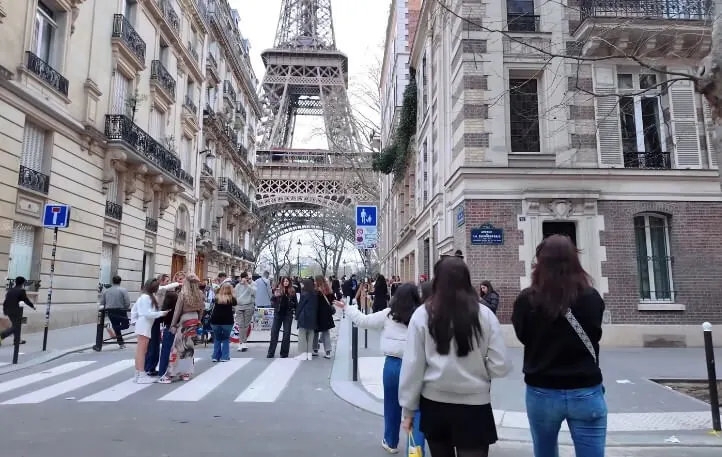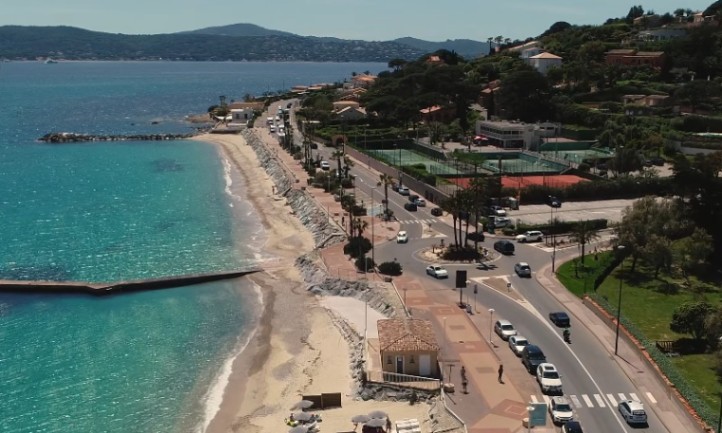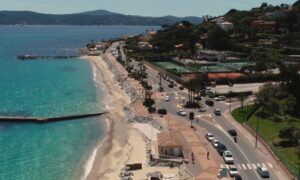Paris, the City of Light, is a dream destination for millions—but with that dream comes crowds, queues, and packed metro cars during peak travel seasons. The least crowded times to visit Paris are mid-January to early March and mid-November to early December.
During these shoulder and off-season months, the tourist footfall drops significantly, accommodations are cheaper, and you can enjoy the city’s landmarks without battling the crowds.
This period avoids major holidays, school vacations, and international events that typically flood the city with tourists.
Table of Contents
ToggleWhy These Months Are Less Crowded
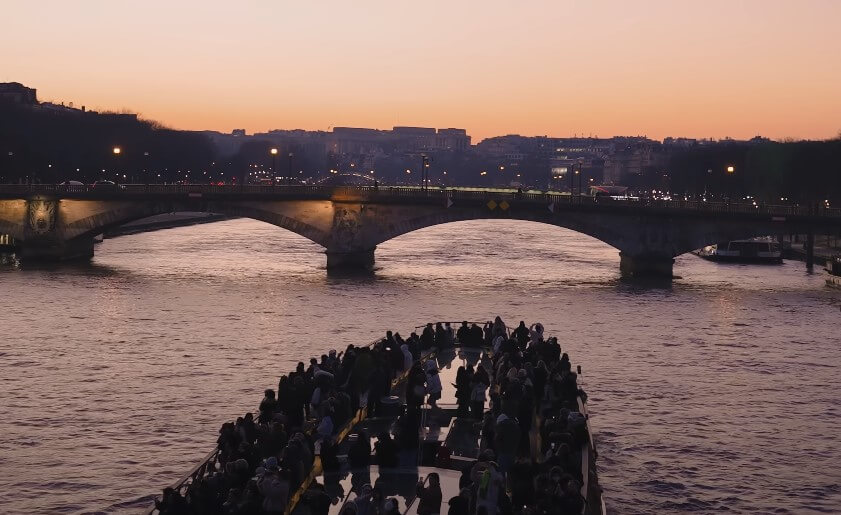
The key reason Paris is quieter during mid-winter and late autumn lies in a mix of factors—weather, school calendars, and major event scheduling.
- Weather Deterrence: Parisian winters are cold, damp, and often grey. Temperatures hover between 3°C and 8°C (37°F to 46°F), and while it rarely snows, the persistent drizzle deters casual tourists.
- No Major Holidays: These months don’t include French or major European holidays, so local and regional travel also decreases.
- Low Hotel Demand: Hotels often offer lower rates to attract business travelers and off-season tourists, which signals reduced demand across the board.
Paris Tourism Season Breakdown
| Season | Months | Crowds | Pros | Cons |
| Low Season | Mid-Jan–Early Mar, Mid-Nov–Early Dec | Very Low | Shorter lines, better prices | Cold, shorter daylight hours |
| Shoulder | Mar–Early May, Oct–Early Nov | Moderate | Fewer tourists, pleasant weather | Some closures or maintenance |
| High Season | Late May–Early Sep | Very High | Warm weather, long days | Expensive, crowded, long waits |
| Festive Peak | Late Dec–Early Jan | High | Holiday decor, vibrant city life | Overbooked hotels, tourist surge |
What to Expect in the Off-Season
Visiting Paris in February or November may lack the buzz of summer festivals, but the rewards are meaningful. You’ll experience shorter wait times at major attractions like the Eiffel Tower or the Louvre. Even more, the locals reclaim their city during these months, making for more authentic interactions in cafés, bakeries, and markets.
Expect to walk into a museum and buy a ticket without queuing. Expect restaurants to have available tables at a reasonable hour. Expect metro rides where you can sit. And perhaps most valuably, expect to see a more relaxed Paris that breathes at its own pace, not one dictated by global tourism.
One way to check real-time crowd conditions before stepping out is by checking live webcams positioned at iconic spots like Place de la Concorde, Eiffel Tower, or Notre-Dame. This helps plan your visits by observing.
Travel and Costs: The Off-Season Advantage
Paris doesn’t lower its standards in winter, but it does lower its prices. You’ll find notable differences in both airfare and accommodations.
| Travel Category | Off-Season Estimate (Feb) | Peak Season Estimate (July) |
| Round-trip airfare (from NYC) | $450–$600 | $950–$1200 |
| 3-Star Hotel/Night | $110–$150 | $220–$350 |
| Eiffel Tower Skip-the-Line Ticket | $40 | $60+ |
| Louvre Entry (Standard) | $19 | $19 |
Flights are often half the summer price, and hotels regularly run seasonal promotions. Museums and attractions remain open—some even extend winter deals like discounted passes or bundled packages for tourists. Plus, indoor activities like wine tastings, patisserie tours, or visiting Parisian passages couvertes (covered arcades) become cozy alternatives when the weather turns.
Hidden Perks: What Winter in Paris Offers
Traveling during the least crowded times reveals a side of Paris that many visitors miss entirely. With fewer people rushing from monument to monument, the city slows down just enough for you to experience its subtler charms.
Seasonal Markets: December brings a festive transformation to the city. The Christmas markets begin appearing in early December and last through the holidays. Some of the best-known ones are located along the Champs-Élysées, in the quaint streets of Saint-Germain-des-Prés, and at the sprawling La Défense market. You’ll find mulled wine, artisanal crafts, roasted chestnuts, and hand-painted ornaments—all in a cozy, small-town atmosphere that contrasts with the city’s usual cosmopolitan pace.
Cultural Access: Paris Fashion Week, held in late February to early March, does bring an influx of fashion professionals, but it doesn’t interfere much with general tourism. Most events are closed to the public and concentrated in specific venues. Meanwhile, museums like the Musée d’Orsay and the Centre Pompidou remain calm and uncrowded, allowing you to take your time with each exhibit, often without needing timed entry slots.
Intimate Atmosphere: One of the most underrated benefits of a winter trip is the chance to see Paris as Parisians do. The cafés are quieter, the Seine feels almost meditative without summer crowds, and shopkeepers are more relaxed and welcoming. Whether you’re browsing a local bookstore, walking through a foggy park, or watching boats from Pont Alexandre III, the atmosphere is deeply personal and even a bit cinematic.
What to Avoid: Still-Crowded Exceptions
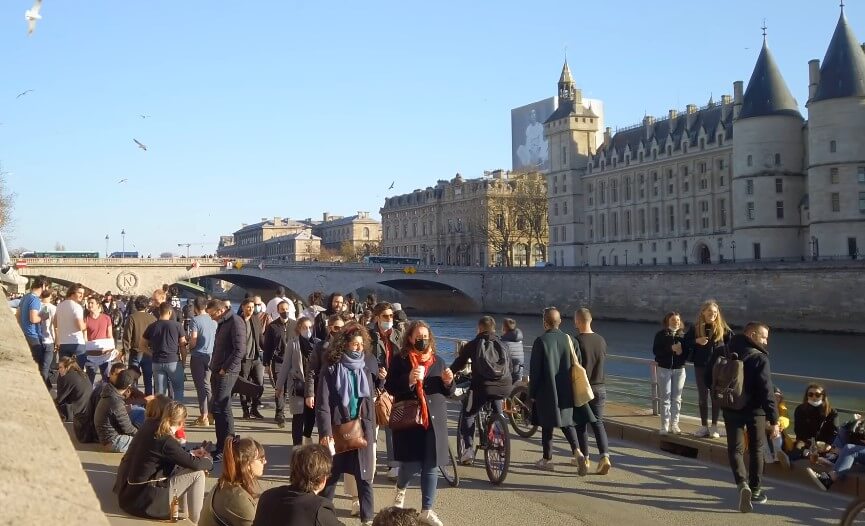
While winter drastically reduces the number of tourists in most areas, a few spots remain busy year-round. Major landmarks like the Louvre, the Eiffel Tower, and Disneyland Paris continue to attract large numbers of visitors, especially on weekends or during school breaks. To make the most of your time, plan your visits to these attractions on weekday mornings and book skip-the-line tickets online when possible.
Also, national holidays in France can cause sudden spikes in domestic travel. For example, All Saints’ Day (November 1) often coincides with a week-long school break, drawing local families into the city’s museums and public venues. Similarly, the week of Valentine’s Day tends to bring a rise in romantic getaways, particularly around popular neighborhoods like Montmartre and Le Marais. If your goal is solitude and quiet exploration, steering clear of these specific windows can make all the difference.
Final Thought: The Best Time Is When Paris Feels Yours
If your idea of Paris involves calmly walking the Seine, sipping espresso in a near-empty Montmartre café, and photographing architecture without someone walking into your shot, the low season is your season. You’ll trade sunshine for serenity—but in doing so, you may discover a quieter, more poetic Paris that travelers miss in July.
For the most peaceful experience, aim for the first two weeks of February or the last week of November. Dress warm, book early, and remember—Paris rewards those who aren’t afraid of a little winter chill.


